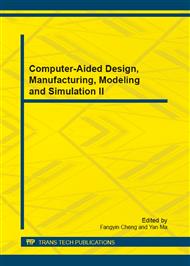p.666
p.671
p.676
p.682
p.687
p.692
p.697
p.702
p.707
Formation Flying Configuration Design for Highly Elliptical Orbit Satellites
Abstract:
A constellation design method is presented which applies to formation flying configuration of highly elliptical orbit satellites. The design method uses approximately relative kinematics equation in determining initial satellite orbits elements of the constellation with an envisaged formation flying configuration and precisely relative kinematics equation in predicting orbits, and then analyzes the envisaged configuration stability so as to judge whether or not the configuration can be well maintained only by natural disturbing forces, without the need to add any control. The approximately relative kinematics equation is derived from the precisely relative kinematics equation on the basis of two assumptions. The precisely relative kinematics equation can take into account all kinds of disturbing forces in order to analyze the constellation configuration stability in as real dynamics circumstances as possible. In the presented work, the configuration design example of a constellation composed of five surrounding satellites and an objective satellite, all with high eccentricities, are analyzed by simulations. It is seen that the constellation design method effectively solves formation flying configuration for highly elliptical orbit satellites.
Info:
Periodical:
Pages:
687-691
Citation:
Online since:
December 2012
Authors:
Price:
Сopyright:
© 2013 Trans Tech Publications Ltd. All Rights Reserved
Share:
Citation:


